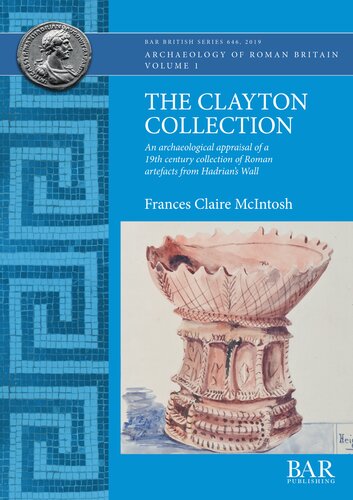

Most ebook files are in PDF format, so you can easily read them using various software such as Foxit Reader or directly on the Google Chrome browser.
Some ebook files are released by publishers in other formats such as .awz, .mobi, .epub, .fb2, etc. You may need to install specific software to read these formats on mobile/PC, such as Calibre.
Please read the tutorial at this link: https://ebookbell.com/faq
We offer FREE conversion to the popular formats you request; however, this may take some time. Therefore, right after payment, please email us, and we will try to provide the service as quickly as possible.
For some exceptional file formats or broken links (if any), please refrain from opening any disputes. Instead, email us first, and we will try to assist within a maximum of 6 hours.
EbookBell Team

5.0
18 reviewsThis book examines the archaeological material from Hadrian's Wall within the significant Clayton Collection. The Collection was formed through the work of John Clayton, antiquarian and landowner, in the 19th century. His work took place at a pivotal time in the study of Hadrian's Wall, as public interest was growing, access was improving, and the discipline of archaeology was developing. As part of a large network of antiquarians, Clayton excavated, studied and published his discoveries. After his death, his archaeological estate was retained, and the Collection was moved into a museum in 1896. Despite being in the public domain for so long, the material has never been studied as a whole, or in the light of its 19th century creation. This work is the first to bring together the history and development of the collection alongside the material itself. It offers an insight into how important antiquarian collections can provide valuable information about Roman life.